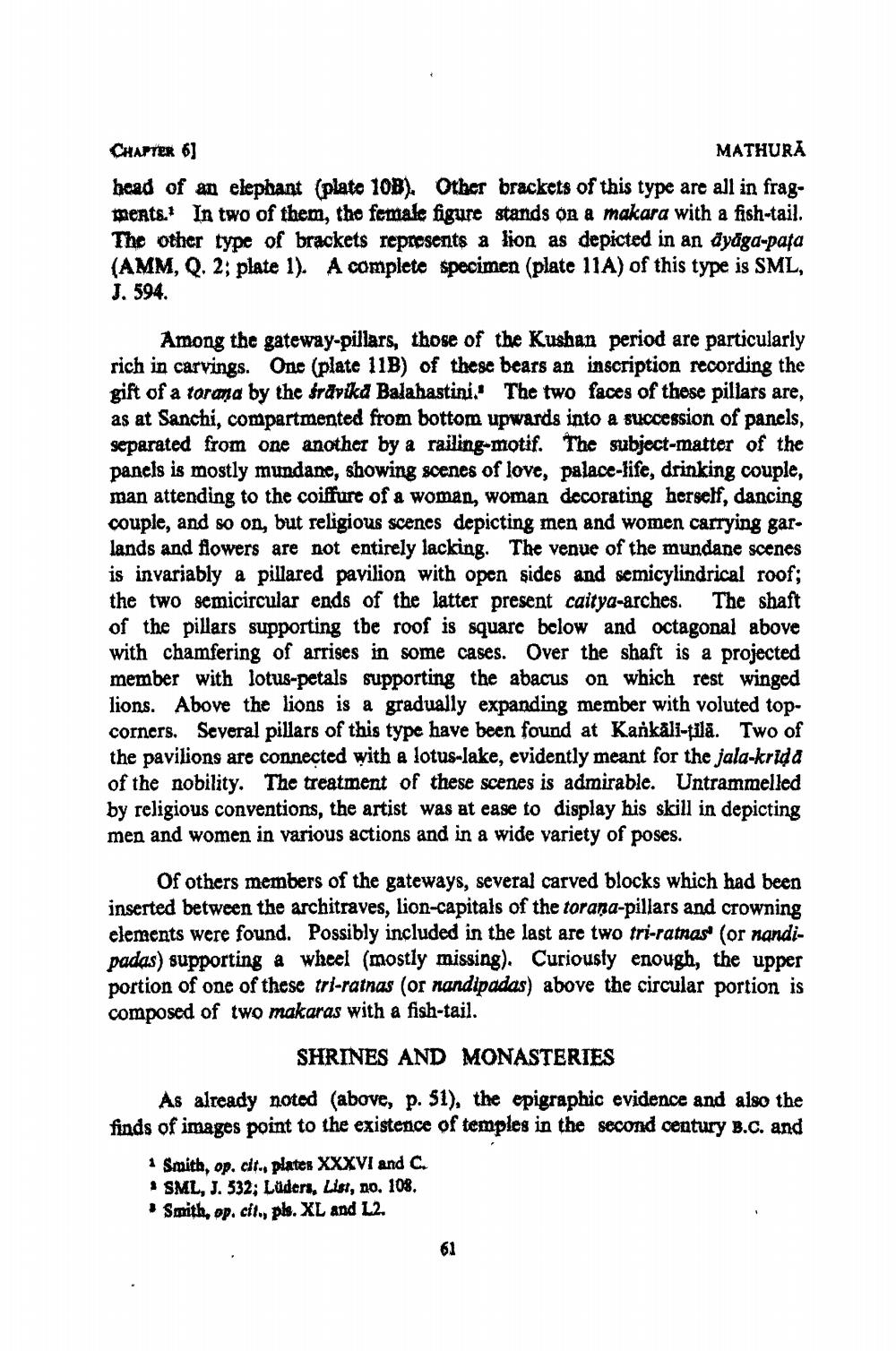________________
CHAPTER 61
MATHURA head of an elephant (plate 10B). Other brackets of this type are all in fragments. In two of them, the female figure stands on a makara with a fish-tail. The other type of brackets represents a lion as depicted in an dyaga-pata (AMM, Q. 2; plate 1). A complete specimen (plate 11A) of this type is SML, J. 594.
Among the gateway-pillars, those of the Kushan period are particularly rich in carvings. One (plate 11B) of these bears an inscription recording the gift of a torana by the frårika Balahastini. The two faces of these pillars are, as at Sanchi, compartmented from bottom upwards into a succession of panels, separated from one another by a railing-motif. The subject matter of the pancis is mostly mundane, showing scenes of love, palace-life, drinking couple, man attending to the coiffure of a woman, woman decorating herself, dancing couple, and so on, but religious scenes depicting men and women carrying gar. lands and flowers are not entirely lacking. The venue of the mundane scenes is invariably a pillared pavilion with open sides and semicylindrical roof; the two semicircular ends of the latter present caitya-arches. The shaft of the pillars supporting the roof is squarc below and octagonal above with chamfering of arrises in some cases. Over the shaft is a projected member with lotus-petals supporting the abacus on which rest winged lions. Above the lions is a gradually expanding member with voluted topcorners. Several pillars of this type have been found at Kankäli-tila. Two of the pavilions are connected with a lotus-lake, evidently meant for the jala-krida of the nobility. The treatment of these scenes is admirable. Untrammelled by religious conventions, the artist was at ease to display his skill in depicting men and women in various actions and in a wide variety of poses.
Of others members of the gateways, several carved blocks which had been inserted between the architraves, lion-capitals of the torana-pillars and crowning elements were found. Possibly included in the last are two tri-ramas' (or nandipadas) supporting a wheel (mostly missing). Curiously enough, the upper portion of one of these trl-ratnas (or nandipadas) above the circular portion is composed of two makaras with a fish-tail.
SHRINES AND MONASTERIES As already noted above, p. 51), the epigraphic evidence and also the finds of images point to the existence of temples in the second century B.C. and
1 Smith, op. cit., plater XXXVI and C. * SML, J. 532; Läders, List, no. 108.
Smith, op. cit., pls. XL and L2.




